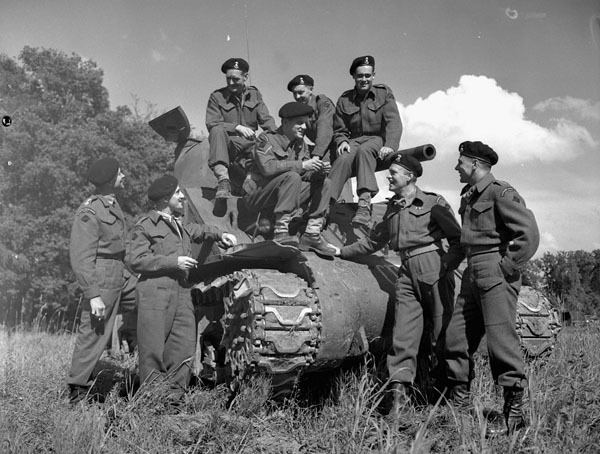Active 1940–1946 Branch Canadian Army Size Regiment | Country Canada Role armoured regiment Motto(s) Droit au but | |
 | ||
The Sherbrooke Fusilier Regiment was a World War II Canadian armoured regiment created in 1940 with officers and men from two Militia regiments in Sherbrooke, Quebec. The name is a blend of Les Fusiliers de Sherbrooke, a francophone infantry unit, and the Sherbrooke Regiment, an English-speaking machine gun unit. The armoured corps lineage of the Sherbrooke Fusiler Regiment is carried forward by the present-day The Sherbrooke Hussars.
History
The regiment was formed as an infantry unit, The Sherbrooke Fusiliers Regiment in 1940. It was converted to an armoured regiment in 1942 becoming 27th Armoured Regiment (The Sherbrooke Fusilier Regiment) initially as part of the 4th Armoured Brigade. By the time it went into action it was in the 2nd Canadian Armoured Brigade.
The most prominent former member of the SFR is Sydney Valpy Radley-Walters who was later Director-General Training and Recruiting Canadian Forces. The second most important artifact from World War II, after the guidon, is a Sherman tank named "Bomb". This M4A2 Sherman landed in Normandy on D-Day, served on the front lines throughout the campaigns from June 1944 to May 1945 in Germany without being destroyed or knocked out. It was returned to Canada after the war, and has been a strong reminder of the sacrifices of the regiment.
In his 2004 book, No Holding Back about Operation Totalize in Normandy in August 1944, author Brien A. Reid states that it is most likely that it was a Sherman Firefly belonging to A Squadron of the Sherbrooke Fusilier Regiment that actually destroyed the German Tiger tank number 007 that was commanded by SS-Hauptsturmfuhrer Michael Wittmann on 8 August 1944. Wittman was one of the highest scoring German tank commanders of the war. His death is usually attributed to a Firefly of the 1st Northamptonshire Yeomanry.
The unit was demobilized in 1946 and its battle honours shared equally by the two predecessor units the Sherbrooke Hussars and the Sherbrooke Fusileers.
